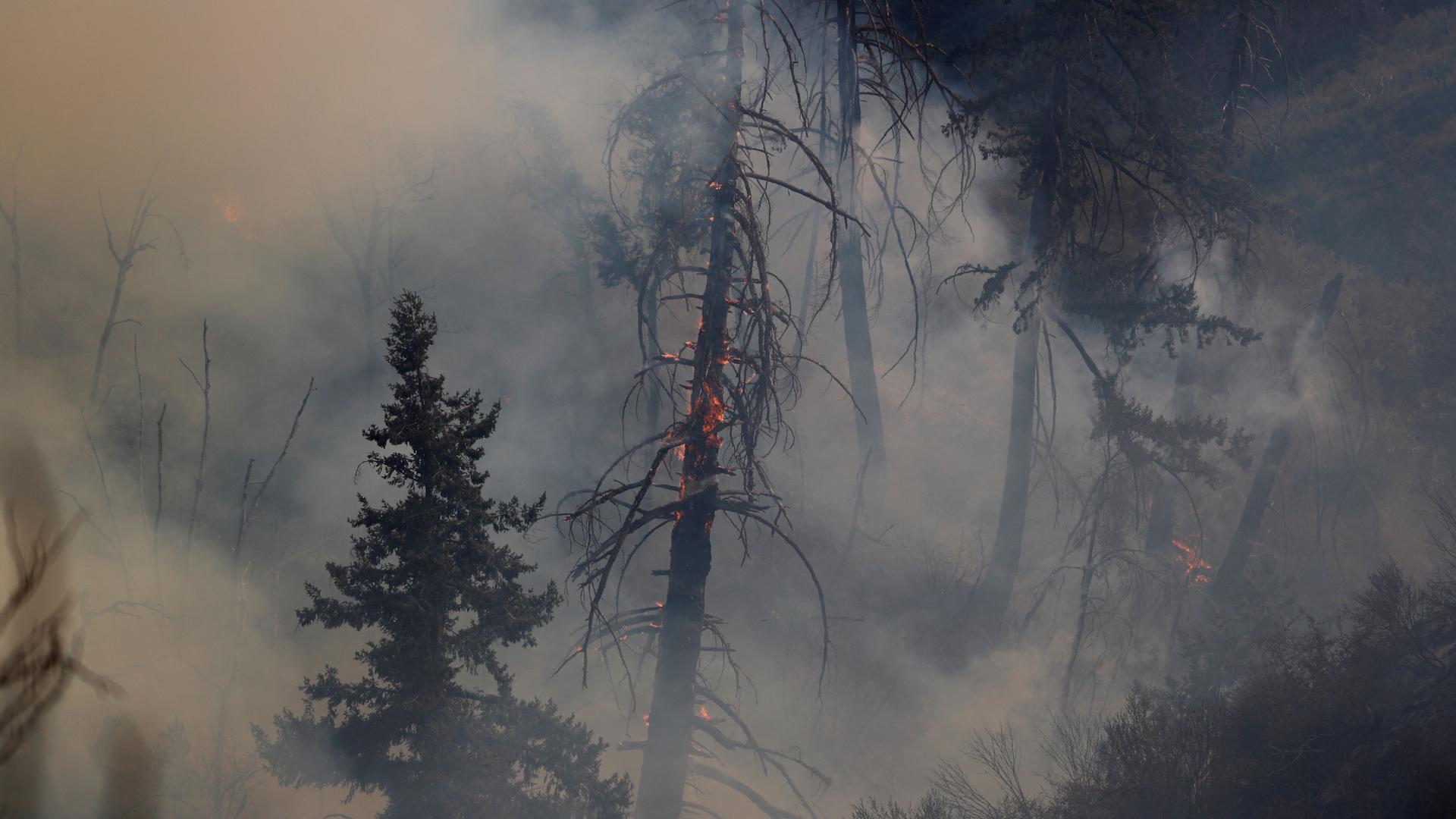This author argues that fighting climate change means focusing on ‘Earth repair’
When reporting on climate change, most of the news is pretty bleak.
Related: The world is watching: 2020 US election will have a big impact on global climate politics
Like right now — we’re seeing devastating wildfires in the US West and Brazil’s Amazon; flooding in China, Pakistan and Sudan, which has displaced tens of thousands of people; and this past summer, a Manhattan-sized piece of ice broke off of the Arctic’s largest remaining ice shelf (the second summer in a row with such a large loss).
Amid the devastation, author Judith Schwartz looks for bright spots — stories about people restoring landscapes and living more harmoniously with nature. Schwartz talked to The World’s host Marco Werman about her new book, “The Reindeer Chronicles,” which pulls examples of what she calls “Earth repair” from China to Norway and Saudi Arabia to Hawaii.
Related: Brazil’s wetlands ravaged by out-of-control wildfires
Marco Werman: In your stories, in your writing, Judy, you focus on something you call “Earth repair.” You describe it as “a grassroots response to evolving crises … an antidote to despair.” Explain what you mean by Earth repair and how you see it as one solution to climate change.
Judy Schwartz: When I talk about Earth repair, it basically means healing our landscapes and our seascapes. And the thing is that we hear about all this devastating news, but one thing that has been neglected in our conversations about climate is the role of functioning ecosystems to climate regulation.
And the reason that this is good news is that it gives us tremendous agency because we know that we can restore ecosystems from huge landscapes, like you mentioned, in China, where an area the size of Belgium was returned to ecological health, to smaller projects and places. Ecological health on every scale matters.
You mentioned China and the Loess Plateau, the area around the Yellow River that stretches across seven provinces, and what happened there starting in the ’90s. Talk about that restoration. What did it look like? How did it happen? And what did you learn from reporting this story?
This is an area where it was the “breadbasket of China” and it’s actually where agriculture developed in China 10,000 years ago. And over all that time, the land has degraded to the point where you see images of people bringing their goats up hillsides where maybe there’s a few blades of grass, and the Yellow River was silting up and it was a real disaster.
So, the Chinese government, in conjunction with numerous international entities, including the World Bank, decided that rather than have this ongoing problem, they would restore the landscape. They used some very simple approaches. They terraced the land so that the water would flow more slowly, and water would be held in the landscape. They removed animals from where they had been overgrazing so that the land would have a chance to rebound. And they had local people planting trees and planting other kinds of vegetation. And the extraordinary thing is that within 14 years, what had been a wasteland was filled with green and 2 million people were brought out of poverty.
What were the downsides of that when it came to actually executing it?
Well, it was an ongoing challenge to do anything on such a large scale. And also because nothing like this had ever been done, there is, of course, a lot of trial and error, but overall, the project was a huge success.
In fact, one of my motivations for writing this book was to make it clear that these kinds of projects are happening. We may not see them. You know, it’s not a dramatic one-day news story, but all over the world, people are experimenting. They are enhancing the climate resilience of their landscapes. They are turning wastelands into places where people can grow their own food and live their own lives with dignity.
Practically every day on our show, we cover environmental disasters and the daunting challenge of climate change. Why is highlighting these success stories important to you when, as I mentioned earlier, there are literally fires that urgently need to be dealt with?
Well, one thing is that I think it’s so important for people to know that it’s possible to restore landscapes. Land is never static. It’s always in the process of changing. And by working with natural processes, we can help to restore those landscapes — and in doing so, restore climate regulation.
Also, I think it’s really important for us to be curious about how land works, and that can help us address problems such as fires by not being just reactive in a kind of adrenaline sort of way with all of these different tragedies that are unfolding before our eyes, but to also think about landscapes, think about how these lands might be restored. Look at who is out there doing the restoring and what we can learn from what they are doing in their own trial-and-error process.
This interview has been lightly edited and condensed for clarity.
Our coverage reaches millions each week, but only a small fraction of listeners contribute to sustain our program. We still need 224 more people to donate $100 or $10/monthly to unlock our $67,000 match. Will you help us get there today?
